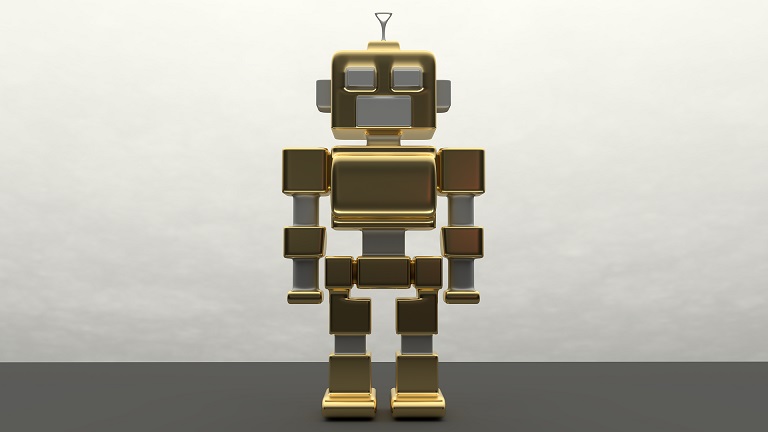For the past few years, we’ve been inundated with predictions that robots, artificial intelligence (AI) and automation technologies will devastate the workplace, replacing many job functions within the next 10-15 years.
We’ve already seen huge shifts in manufacturing, agriculture, administration and logistics where a wide range of manual and repetitive tasks have been automated. More recently, cognitive tasks and data analysis are increasingly being performed by AI and machines.
Even ICT workers themselves are being affected as smart algorithms and other autonomous technologies replace software programming, data analysis and technical support roles.
With AI and machine learning developing at an exponential rate, what does the future look like?
The future
Demand for ICT workers remains strong here in Australia and across the developed world, with the explosion of emergent technologies including IoT, machine learning, big data, blockchain, virtual and augmented reality. However, the rapid deployment of automation is showing signs of disruption in markets providing ICT outsourcing services.
In his book, The Rise of the Robots: Technology and the Threat of Mass Unemployment, Martin Ford explores the changing landscape of a workforce impacted by robotics and automation. He highlights six “disturbing economic trends” which are redefining the American economy (and to a lesser extent our own):
- stagnant wages;
- declining share of profits for workers and increased share for corporations;
- diminishing job creation, lengthening jobless recoveries and rising long-term unemployment;
- soaring inequality;
- declining incomes and rising underemployment for recent graduates; and
- polarisation and part-time jobs.
Ford and analysts like him are asking whether this latest tech-driven revolution will have far more devastating consequences than previous technology waves, with increasingly intelligent machines eventually outperforming and ultimately replacing workers.
Humans to stay
However, not everyone is ringing alarm bells. According to the 2017 McKinsey report, A Future that Works: Automation, Productivity and Employment, we will actually need every human worker, in addition to the robots, to overcome aging demographics across the global economy.
“One-third of new jobs created in the United States in the past 25 years did not exist, or barely existed, 25 years ago. Moreover, every three month,s about six per cent of US jobs are destroyed by shrinking or closing businesses, while a slightly larger percentage of jobs are added. This is not just a US phenomenon; findings from other countries indicate that these are global trends,” the report stated.
McKinsey pointed out that machines often automate tasks rather than entire jobs, with positive augmentation of human productivity and performance.
Role of government
With such divergent views, governments have important roles to play by initiating effective and sound policies to assist workers and organisations adapt and transition to an automated future.
As ICT workers, we understand better than most how technologies are developing and their potential to impact the economic and social constructs of our workplace and society. So, it is incumbent on us to raise these issues and ensure they are widely debated so that appropriate decisions can be made to prepare people for the changes ahead.
We look forward to hosting panel debates on this issue in August at the International Joint Conference on Artificial Intelligence in Melbourne and the ‘AI and the Future of Work’ Conference in Canberra.
The latest ACS Australia’s Digital Pulse report predicts continued strong increases in demand for ICT workers with an additional 81,000 jobs needed by 2022 to fuel future technology-led growth.
This includes softer skills like legal and commercial competence along with innovation and entrepreneurship, all underpinned by new standards and guidelines for technology delivery. These capabilities will allow technologists to maximise their contribution to digital initiatives across diverse environments or even build their own start-up to commercialise a business idea.
Where to next?
In their new book, Machine, Platform, Crowd: Harnessing Our Digital Future, MIT’s Andrew McAfee and Erik Brynjolfsson highlight the opportunities for people who identify where technology can deliver business benefits.
“In Machine Platform Crowd, we took the discussion to the next level and said that the implications of digital, exponential, and combinatorial are new ways of allocating decision making between mind and machine, new ways of organising products and platforms, new ways of connecting the core and the crowd.”
AI and machine learning systems have already developed to the point where they can write music, generate automated reports, create art or even display human traits like curiosity and conduct experiments to self-learn and develop.
Will AI eventually outpace human capability and creativity? The jury is still out and we are just at the tip of the iceberg. But one thing is certain – most workers will be at least partially impacted.
So, the sensible approach is keep a few paces ahead of the machines and – as indicated in our Australia’s Digital Pulse report – maintain up-to-date and relevant technology skills for the digital age, while enhancing skills including creativity and the “human nous” that machines currently lack.
Anthony Wong is President of the ACS and Chief Executive of AGW Consulting P/L, a multidisciplinary ICT, Intellectual Property Legal and Consulting Practice.










